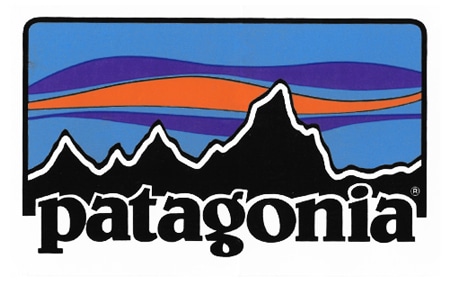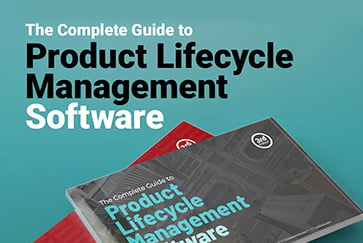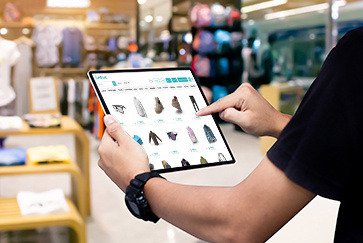Share this
5 Signs You’re Ready for PLM Software
by Surefront on Dec 11, 2024 11:08:59 AM
Home > Blog > 5 Signs You’re Ready for PLM Software
Table of Contents
- You’re Relying on Outdated Tools
- Your Teams Are Overwhelmed
- Your Data is Trapped in Silos
- You Lack Transparency Across Teams
- Your Business is Scaling Rapidly
- How to Choose the Right PLM Software
- Avoiding Common Pitfalls
- Further Reading
Growth is a good problem to have - until your tools can’t keep up. For many businesses, managing Product Lifecycle processes with spreadsheets, emails, and outdated tools works for a while. But as product lines expand, team structures grow, and customer demands increase, these tools quickly become more of a burden than a solution.
So, how do you know it’s time for a change? Enter Product Lifecycle Management (PLM) Software: a centralized platform designed to streamline workflows, eliminate errors, and improve collaboration.
This blog will walk you through the five clear signs that your business is ready for PLM Software, while providing a roadmap to help you confidently choose the right solution for your needs.
Sign #1: You’re Relying on Outdated Tools
If your team spends hours sifting through Excel sheets and email threads to manage product data, you’re not alone. This status quo is a hallmark of many businesses before they transition to PLM Software. Unfortunately, outdated tools often result in:
- Data Loss: Important product information gets buried in scattered files.
- Inaccuracies: Manual data entry leads to mistakes that ripple across teams.
- Missed Deadlines: Slow approval processes hinder progress.
How PLM Helps:
A modern PLM system, like Surefront, centralizes product data and automates workflows, ensuring that your team always has access to accurate, up-to-date information in one place.
 |
IKEA used PLM Software to streamline its product design-to-market process. By replacing spreadsheets with centralized data and automated workflows, IKEA reduced development timelines by 18%, enabling quicker launches for new collections. |

Sign #2: Your Teams Are Overwhelmed
When teams are juggling hundreds or thousands of SKUs, staying organized becomes a herculean task. Whether they’re tracking historical product data, sourcing materials, or coordinating with suppliers, the manual effort required can leave employees feeling overwhelmed.
How PLM Helps:
By integrating all aspects of product management, PLM Software reduces the workload and gives teams back their time. Tools like Surefront allow you to store and retrieve historical data instantly, track product changes seamlessly, and collaborate with suppliers in real time.

|
Unilever adopted PLM Software to manage its extensive product portfolio across global markets. This transition allowed teams to standardize processes, improving operational efficiency and reducing data management time by 22%. |
Sign #3: Your Data is Trapped in Silos
Disconnected tools create silos that prevent teams from sharing information effectively. For example:
- The design team might be working on outdated specs.
- The sourcing team struggles to get accurate quotes.
- The sales team isn’t aware of production delays.
How PLM Helps:
A PLM platform eliminates silos by creating a single source of truth. Everyone, from designers to merchandisers to suppliers, works within the same system, accessing the most recent updates instantly.
 |
Patagonia leveraged PLM Software to eliminate data silos between its design, sourcing, and production teams. This resulted in faster decision-making and a 25% improvement in collaboration efficiency, allowing the company to better align with its sustainability goals. |
Sign #4: You Lack Transparency Across Teams
When decision-makers can’t see what’s happening in the Product Lifecycle, inefficiencies creep in. Lack of transparency leads to bottlenecks, miscommunication, and repeated tasks.
How PLM Helps:
PLM Software provides clear visibility into every stage of the lifecycle. With features like visual workflows, dashboards, and activity logs, you can track progress, identify bottlenecks, and make informed decisions faster.
 |
Sephora implemented PLM Software to improve visibility into product development and supplier relationships. With dashboards that tracked every stage of the lifecycle, they reduced production delays by 15%, ensuring timely launches of seasonal collections. |
Sign #5: Your Business is Scaling Rapidly
Rapid growth is exciting - but it can strain existing systems to the breaking point. As you onboard more suppliers, launch new product lines, and enter new markets, manual tools simply can’t keep up.
How PLM Helps:
PLM systems are built for scalability. They grow with your business, providing customizable workflows, advanced analytics, and seamless integration with ERP and PIM systems. Tools like Surefront enable businesses to scale without compromising efficiency or accuracy.
 |
H&M scaled its global operations with the help of PLM Software, which allowed them to efficiently manage supplier relationships and track product data across multiple regions. The result? Faster launches and improved inventory accuracy across 4,000+ stores worldwide. |
How to Choose the Right PLM Software
Recognizing the need for PLM is just the first step. Choosing the right system requires careful evaluation. Here’s a roadmap to guide your decision:
Step 1: Define Your Needs
What are your top priorities? Whether it’s automating workflows, improving collaboration, or reducing errors, knowing your pain points will help you focus on solutions that address them.
Step 2: Craft a Detailed RFP
A Request for Proposal (RFP) ensures you evaluate vendors systematically. Include details like:
- Your business challenges and goals.
- Must-have features (e.g., centralized data, workflow automation).
- Scalability requirements.
Step 3: Evaluate Vendors Thoroughly
When reviewing RFP responses, prioritize:
- Ease of Use: Ensure the interface is intuitive and user-friendly.
- Customizability: Look for tools that adapt to your workflows.
- Comprehensive Functionality: Choose a system that covers the entire lifecycle.
Avoiding Common Pitfalls
When selecting PLM Software, avoid these common mistakes:
- Ignoring Scalability (40%): Ensure the system can grow with your business.
- Overlooking Usability (35%): A difficult interface can hinder adoption.
- Skipping Training (25%): Without onboarding support, teams may struggle to use the software effectively.

Conclusion
The signs are clear: If your business is overwhelmed by outdated tools, disconnected data, and inefficient processes, it’s time to invest in PLM Software. The right system will centralize your workflows, improve team collaboration, and support your growth - setting your business up for long-term success.
Further Reading

PLM vs PIM: Which Do You Need?

What are Tech Packs?

The Ultimate Guide to a Perfect Line Sheet

The Complete Guide to Product Development and Merchandising
Surefront is flexible. It works seamlessly when the buyer and vendor are meeting in-person or discussing products remotely.
You don’t want your data to be siloed. Your company’s CRM, PIM and PLM solutions shouldn’t operate in a vacuum, either. Surefront is a unified product collaboration platform to power growth and ROI. Our patented PIM, CRM, and PLM solutions streamline the omni channel sales, merchandising and product development processes. By combining these essential functionalities, Surefront creates a single source of truth throughout your Product Lifecycle, sales and listing processes.
The results? Up to 150% more revenue per employee and a 40% shorter product development cycle is just the beginning. Try our 10x ROI calculator to see your company’s potential profits. Or, skip the noise and book a custom demo with one of our unified product collaboration management experts today. The retail industry evolves quickly and has a lot of moving parts. We do all of the research, so you don’t have to. Stay ahead of market fluctuations, trends and new features by subscribing to our Unified Product Collaboration Management Blog.
References
Share this
- PLM Software (36)
- PIM Software (29)
- Apparel & Fashion (20)
- Trending Topics (20)
- Merchandising (16)
- CRM Software (13)
- PLM Implementation (11)
- Catalog Management (6)
- Tech Packs (6)
- PLM RFP (5)
- Success Stories (5)
- Sustainability (5)
- Data Import (4)
- Line Sheet (4)
- Luxury Goods & Jewelry (4)
- Product Development (4)
- Retail (4)
- Supply Chain (4)
- Category Management (3)
- Home Furnishings (3)
- Wholesale (3)
- Consumer Packaged Goods (CPG) (2)
- Cosmetics (2)
- Data Export (2)
- Health & Beauty (2)
- RFQ & Quote Management (2)
- Consumer Electronics (1)
- Import & Export (1)
- Industry Events (1)
- Inventory Management (1)
- Pet Stores (1)
- Purchase Orders (1)
- Report Builder (1)
- Textiles & Raw Materials (1)
- Unified Solution (1)
- Vendor Management (1)
- Visual First (1)
- White Paper or Case Study (1)
- workflow (1)
- October 2025 (3)
- September 2025 (3)
- August 2025 (4)
- April 2025 (4)
- March 2025 (3)
- January 2025 (8)
- December 2024 (5)
- November 2024 (3)
- October 2024 (5)
- September 2024 (6)
- August 2024 (2)
- July 2024 (1)
- June 2024 (3)
- May 2024 (4)
- April 2024 (5)
- March 2024 (3)
- February 2024 (2)
- December 2023 (4)
- September 2023 (2)
- August 2023 (5)
- July 2023 (3)
- June 2023 (2)
- May 2023 (2)
- April 2023 (4)
- March 2023 (5)
- February 2023 (3)
- January 2023 (5)
- December 2022 (4)
- November 2022 (3)
- October 2022 (4)
- September 2022 (5)
- August 2022 (4)
- July 2022 (2)
- May 2022 (1)
- February 2022 (1)
- January 2022 (1)
- September 2021 (1)
- May 2021 (1)
- April 2021 (1)
- February 2021 (1)
- May 2020 (1)
